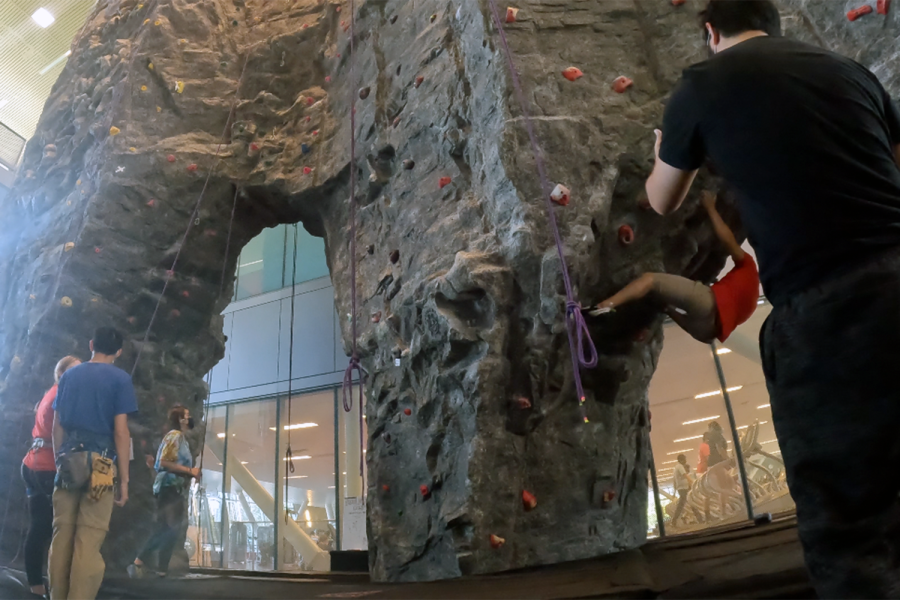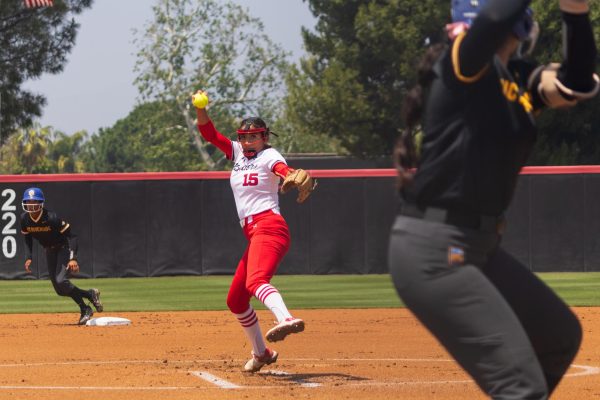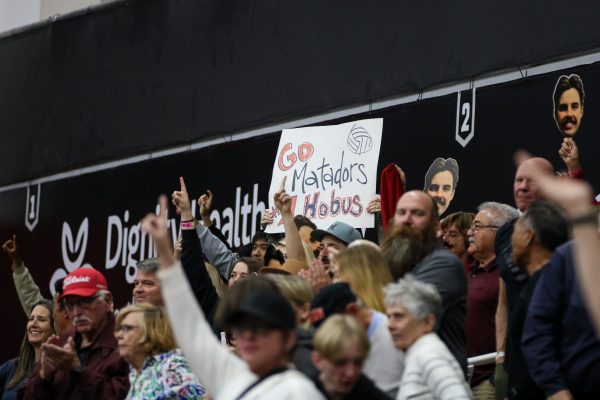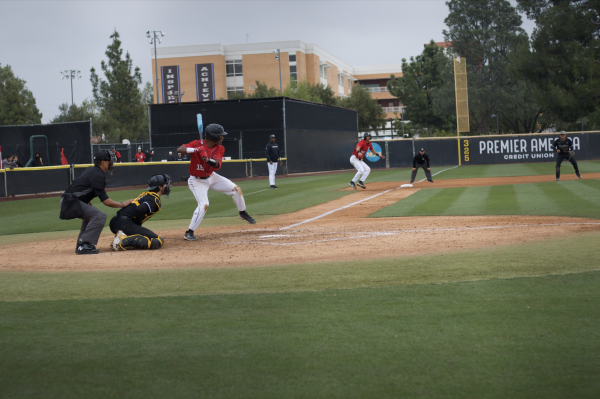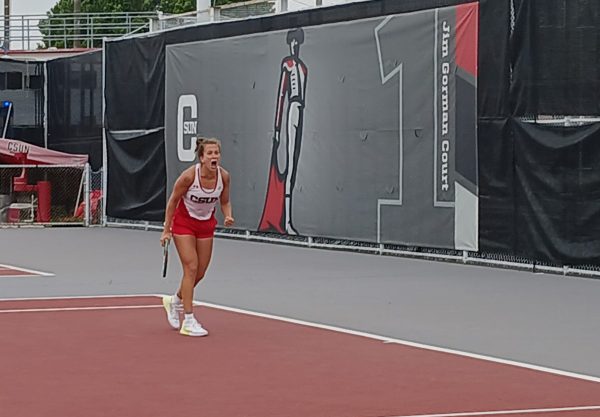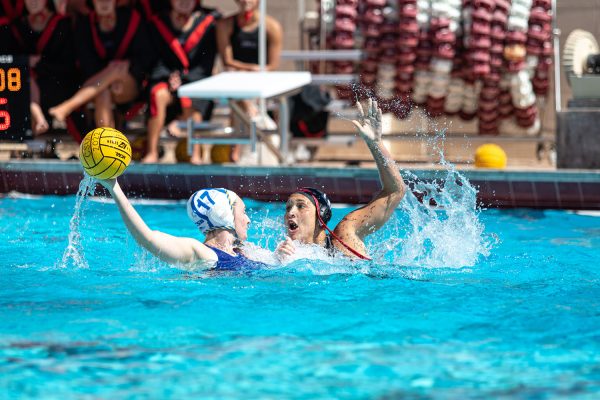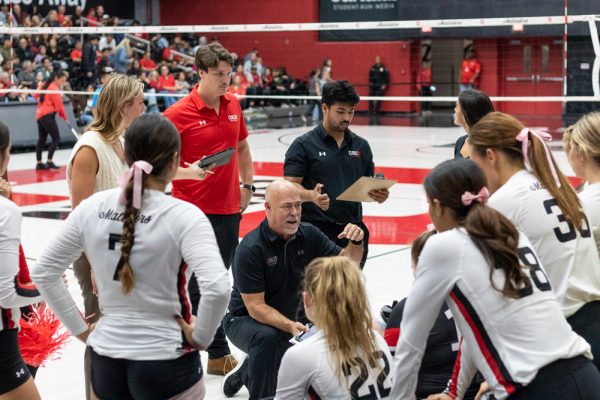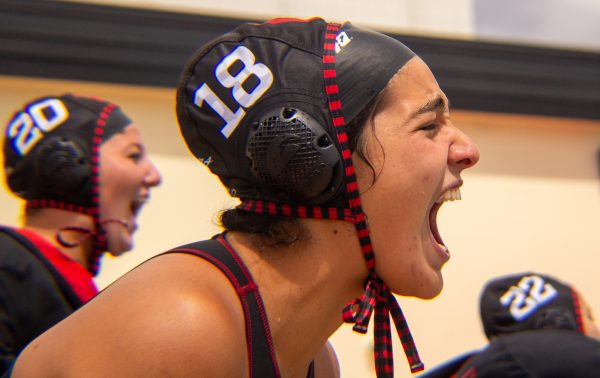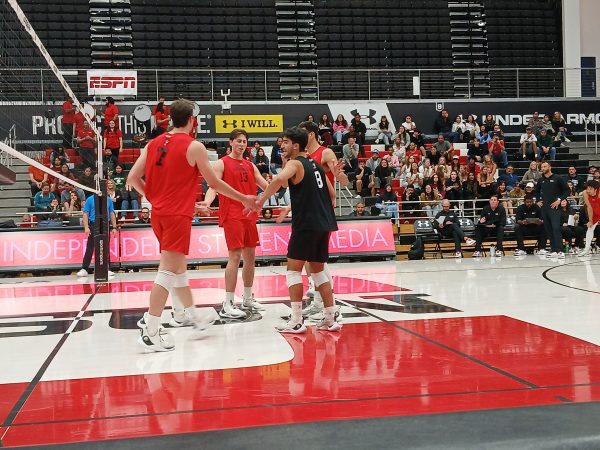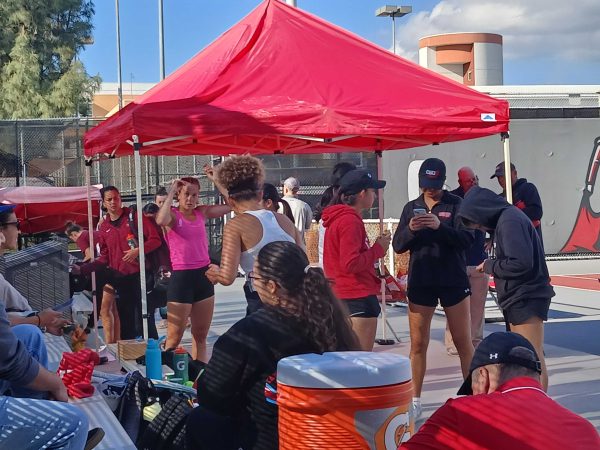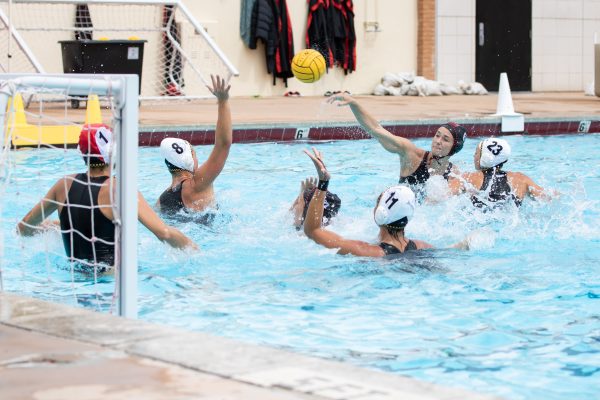A CSUN climber’s story
Photo courtesy of Jeremias Andrade. Image of CSUN’s Student Recreation Center’s rock wall.
May 20, 2022
Rock climbing is an intensive physical and mental sport that requires strength, cardiovascular fitness and quick thinking.
Jeremias Andrade, a sophomore at CSUN, has been a serious rock climber for 10 years. “When I was about 9, I liked climbing trees so my family took me to a place called Stoney Point and I started climbing the boulders they have there,” Andrade said.
Andrade, 19, has dedicated much of his time, money and passion to the sport. He met many of his closest friends — Arnold Baltodano, Michael Boulos and Natalie Nisperos — at the CSUN Student Recreation Center’s Ridge Rock Wall during the fall 2021 semester.
Andrade started a climbing group made up of CSUN students who go on climbing, backpacking and canyoneering trips on weekends.
Baltodano explains that daily training is very important for rock climbing: “Jeremias’ experience is what makes him a good climber. He practices certain moves so when he is in an outdoor setting those skills transfer.”
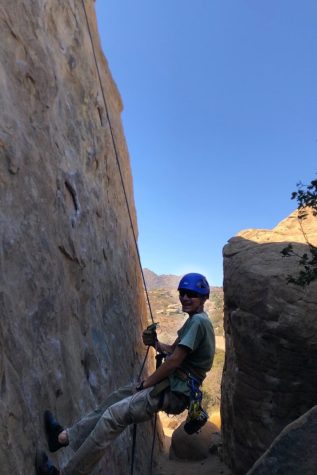
Andrade mainly practices his skills at the CSUN rock wall and Boulderdash, a local popular indoor climbing gym.
Nisperos, a new climber who works at the CSUN rock wall, believes there’s a variety of factors that make a successful rock climber.
“Physically I think you need to have some strength, flexibility, and coordination … More importantly, I think you need to have confidence and be willing to try and fail,” Nisperos said. “I do believe that Jeremias has these skills and is confident in his climbing abilities.”
Andrade agrees and answers that, “Climbing encourages you to have self-confidence because when you’re going for a hard move you have to trust yourself that you’re able to do it.”
Dominic Buttitta, supervisor at the CSUN rock wall, explains that people can have different goals within climbing. “Someone who climbs for fitness is different from someone who climbs to push grades, who is different from the people who exclusively climb outdoors for spiritual or naturalistic reasons,” Buttitta said.
He explains that Andrade fits into that third category of someone who is really all about the outdoor experience.
“Jeremias is intelligent about safety, possesses a lot of hard skills for big wall and trad climbing, and is passionate about bringing others into the sport through hosting trips,” Buttitta added.
Andrade has taken on many challenging outdoor climbs, but one of his standouts include the northwest face of Half Dome at Yosemite National Park. He also remembers the routes Spaceshot, Touchstone, and Moonlight Buttress in Zion National Park as being challenging.
Andrade enjoys teaching his peers about rock climbing. His climbing group ranges from first-time climbers to climbers with years of experience who go out to climb on weekends at locations around Southern California.
The climbers that go on Andrade’s climbing, canyoneering and backpacking trips learn many skills from him.
“He has taught me a lot about the equipment and the process of climbing … Andrade is very knowledgeable about the sport so it is fun to learn from him and hear about his experiences,” Nisperos said.
Baltodano reflects on that he has also learned a lot from Andrade: “Climbing with Jeremias has shown me how much time and dedication a sport like rock climbing requires, along with technical aspects like anchor setups and knots needed to climb safely.”
Indoor and outdoor climbing are very different, but Andrade likes to practice both. Buttitta, who is a main routesetter at the CSUN rock wall, explains how the starting place for any climb is to first determine its style.
“Style can have to do with the type of hold being used like crimps, pinches or slopers, or it can do with the way the climber moves on the wall,” Buttitta explained. “So once you pick a style, the next step is to have an idea of the difficulty of the climb, and then to start setting the moves you want to incorporate.”
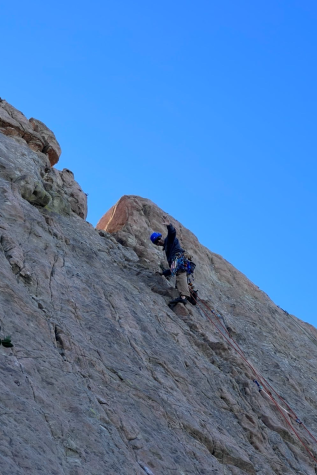
Boulos, a former CSUN student and employee at the CSUN rock wall, has been climbing for 2 ½ years. He believes that a good climber is someone who trains often, but who is also proficient in rescue techniques in case a climb goes wrong.
Sure enough, one of their climbing trips did go wrong. Baltodano and Boulos were on a climbing trip with Andrade in Joshua Tree in February 2022 when the day began to go awry.
Andrade, Boulos and Baltodano were climbing an intermediate route when all of a sudden, they found themselves on a different, expert-level route. The style of climbing they were doing, trad climbing, did not allow them to simply go back down to the bottom so they had to call Joshua Tree search and rescue.
Boulos explains the rescue situation they encountered: “We got about 85% to the top with 50 feet left when we faced a route with exposure and we realized we lost our path on the way up … so we had to bail the climb.”
He describes how Andrade took control of the situation, deciding that he and Boulos would rappel down, or use their rope to go to the ground. The plan was to scramble up to the top to throw a line down to Baltodano. Unfortunately, they quickly realized it was too dangerous to hike up.
Baltodano reflects on the event by stating that, “Jeremias took what he thought was the best course of action he saw at the time.”
Andrade’s long background in rock climbing, as well as the rescue event that took place in Joshua Tree, helped inspire him to join a mountain search and rescue team in the Northridge area.
“I think climbing had a lot to do with me wanting to do search and rescue because it’s very relatable with knots and ropes,” Andrade said.
Andrade’s goal for the summer is to complete the rock guide certification which will allow him to guide others in outdoor activities like rock climbing and mountaineering.
